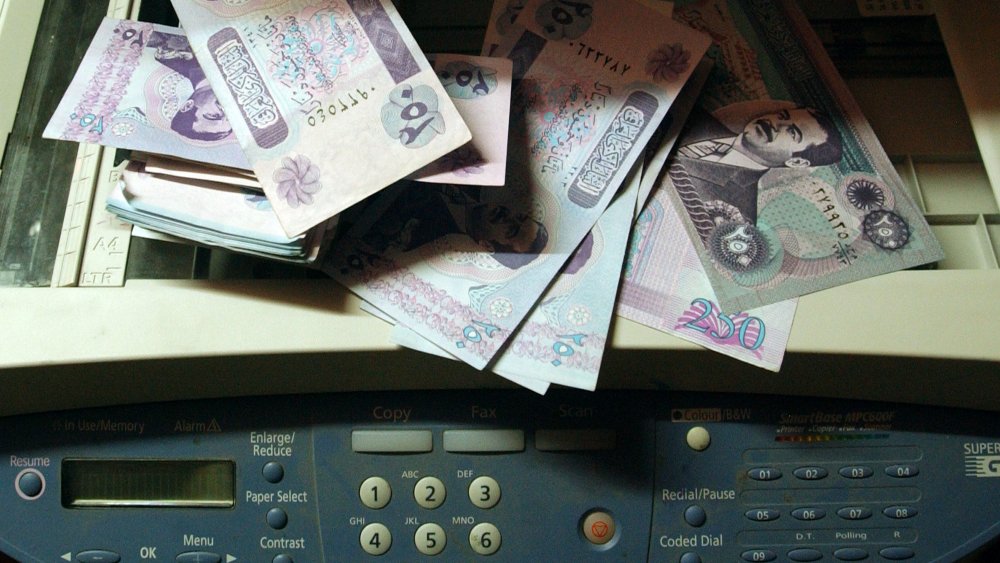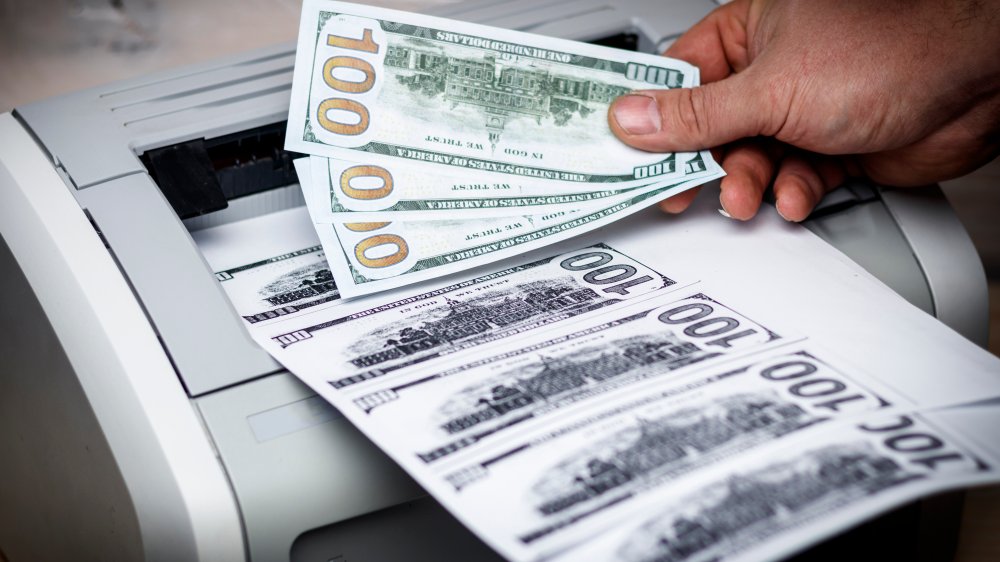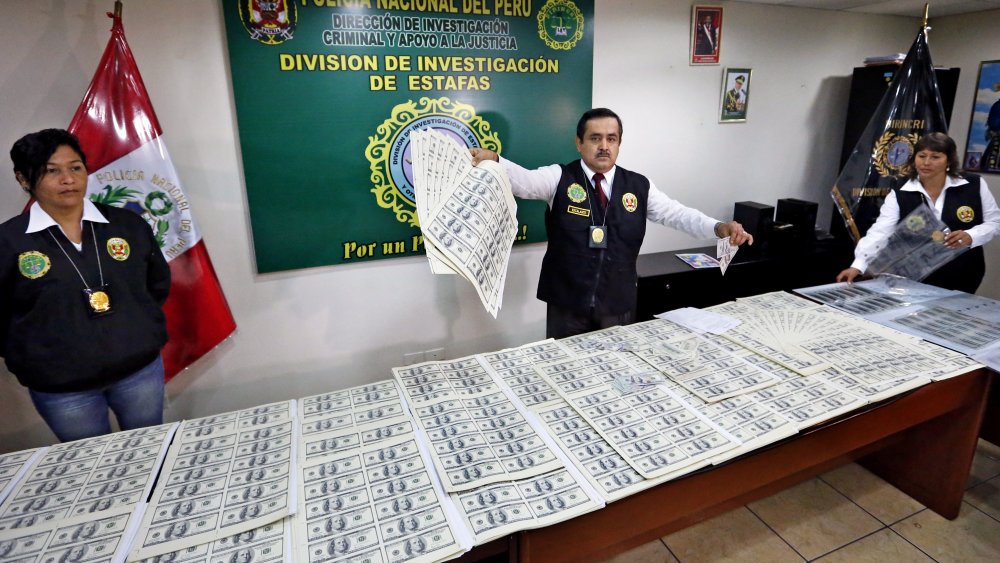Here's What Happens When You Photocopy Money
If you haven't been to your local copy shop lately, you simply must. Technology has come so far over the last few years. Why, a high-end copy machine nowadays can produce prints with as many as 9600 by 600 dots per inch. With that sort of crystal clear quality and the ready availability of all manner of fancy papers, you might ask yourself "Why don't I buy a ream of mint green stationery, shove a couple of sawbucks in the Xerox, and break real bad printing off sweet duckets?"
Chump change
Funnily enough, the government somehow recognized pretty early on that a machine capable of making exact replicas of two dimensional surfaces might be a threat to the stability of a paper currency. That's why bills and notes around the world are outfitted with little-understood, remarkably hush-hush watermarks and patternry designed to alert printers and digital image editors to the potential presence of fat stacks of cash.
Exhibit A is the EURion constellation, a distinctive five point pattern incorporated into the face of most modern currency. It's pretty easy to spot in the tiny zeroes on the back of a twenty dollar bill and every variation of the Euro, and can be found on cash from all over the world. When software built into photocopiers senses this pattern, the machine will deliberately trash the resulting copy, either by printing only a fraction of the image or by refusing to print at all. Additionally, most versions of programs like Adobe Photoshop will display an intimidating warning message if they detect currency in an image file.
What makes this extra interesting is that, by design, we don't know all of the ways that software can spot your attempts to slam out a couple of sheets of scratch, and with new security measures being included all the time, it's unlikely that counterfeiters will be able to catch up. At least the ones at Kinkos.
That grifting life is gonna get ya
There are plenty of other ways that currencies around the world have been redesigned to curb the desires of everyone's inner Rob Schneider. The addition of a thin plastic strip to paper money has become common, as has the use of holographic marking and abandoning paper money altogether in favor of polymer banknotes, which have been used in Australia and New Zealand since the 80s and 90s.
But let's say that you won't let any of this deter you. You're a go getter, a dreamer, and in close proximity to the office photocopier. You've managed, hypothetically, to bypass the cryptic software used to keep you from hitting that "print" button and now you've got yourself a billfold four inches thick with cash that, let's be honest, doesn't look particularly real, but to hell with it. Maybe the valet at Fuddruckers won't notice. Besides, what's the worst that could happen?
So glad you asked. In the good old U.S. of A., counterfeiting currency falls under 18 U.S. Code § 471, which the folks at Cornell's Legal Information Institute will happily tell you states the following: "Whoever, with intent to defraud, falsely makes, forges, counterfeits, or alters any obligation or other security of the United States, shall be fined under this title or imprisoned not more than 20 years, or both." Up until the mid-90s, that fine was "no more than $5000," but the law was reworded in 1994. Now, shoving a Benjamin in the Xerox machine can mean that you owe the American government as much as $250,000. Of course, that's a slap on the wrist compared to the punishment in China, which includes a life sentence.
Still, it doesn't seem to matter how harsh the consequences, or even how advanced anti-counterfeiting measures become. Like James Gordon predicted, there's always going to be escalation. Per the BBC news, in December of 2019, a joint effort by Europol shut down a preposterously advanced ring of counterfeiters in Germany, Austria, France, Greece, Ireland, Luxembourg and Spain, managing to retrieve over a million euros worth of fake bills. The gang had a setup so advanced that they were capable of producing their own holographic strips and chemical watermarks, selling through anonymous Tor routing networks, and were reported to be "the darknet's second largest counterfeit currency producer." Even with such a remarkable, Carmen Sandiego-worthy series of facilities, they still got caught. The point here is, you're probably not going to do a lot better with a Circuit City rewards membership card and an HP Inkjet, so honestly, you're a lot better off not trying.


